BIO224: 18.3 Maintenance of Blood Pressure
1/25
There's no tags or description
Looks like no tags are added yet.
Name | Mastery | Learn | Test | Matching | Spaced |
|---|
No study sessions yet.
26 Terms
What pressure does MAP need to be at?
must be CONSTANTLY maintained around 95 mm Hg
What occurs if MAP deviates from it's set pressure?
triggers mechanisms to restore blood pressure
Explain how the baroreceptor regulates blood pressure that is TOO HIGH.
1.) Baroreceptors in the carotid sinus detect increased BP and fire action potentials faster.
2.) Impulses go to medulla for integration for autonomic centers to INHIBIT sympathetic activity like vasodilation, decreased HR, lowering cardiac output
3.) blood pressure decreases, feedback decreases from medulla
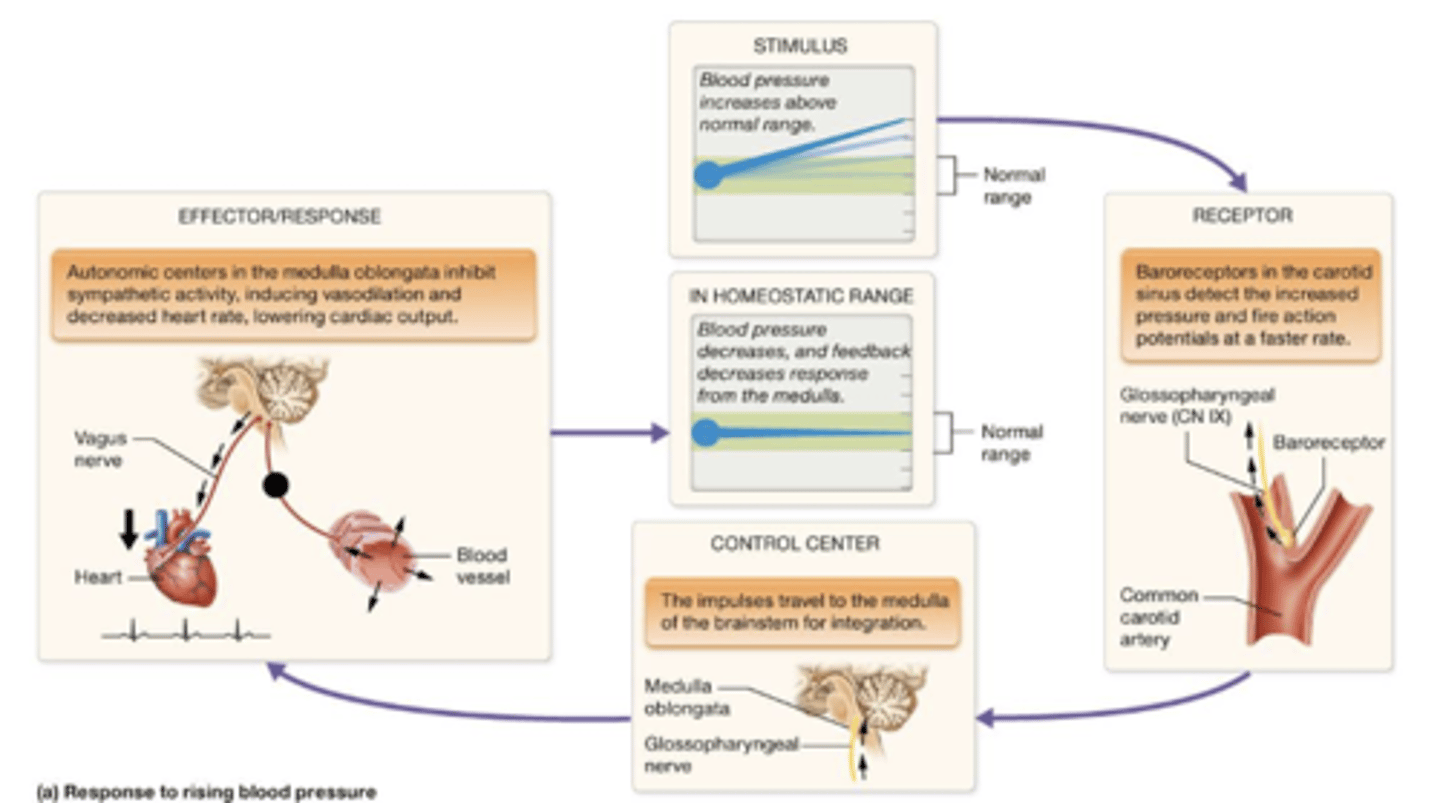
Explain how the baroreceptor regulates blood pressure that is TOO LOW.
1.) Baroreceptors in the carotid sinus detect decreased BP and fire action potentials slower.
2.) Impulses go to medulla for integration for autonomic centers to INHIBIT parasympathetic activity like increased HR, contractility, allowing vasoconstriction
3.) blood pressure increases, feedback decreases from medulla
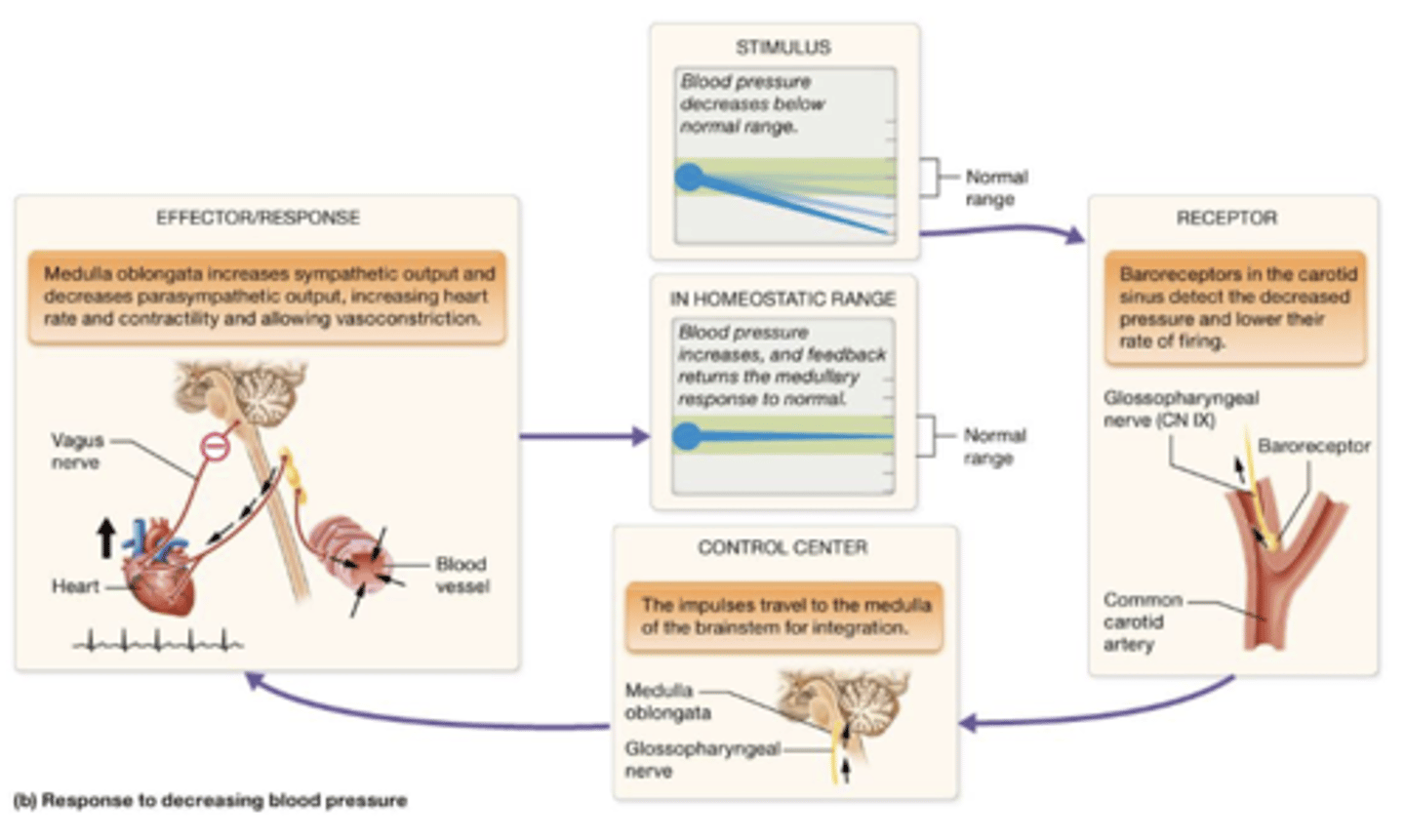
What mechanisms in endocrine and neural INCREASE peripheral resistance?
ENDO; epinephrine, norepinephrine, angiotensin-II, renin secretion
NEURAL; increased sympathetic activity
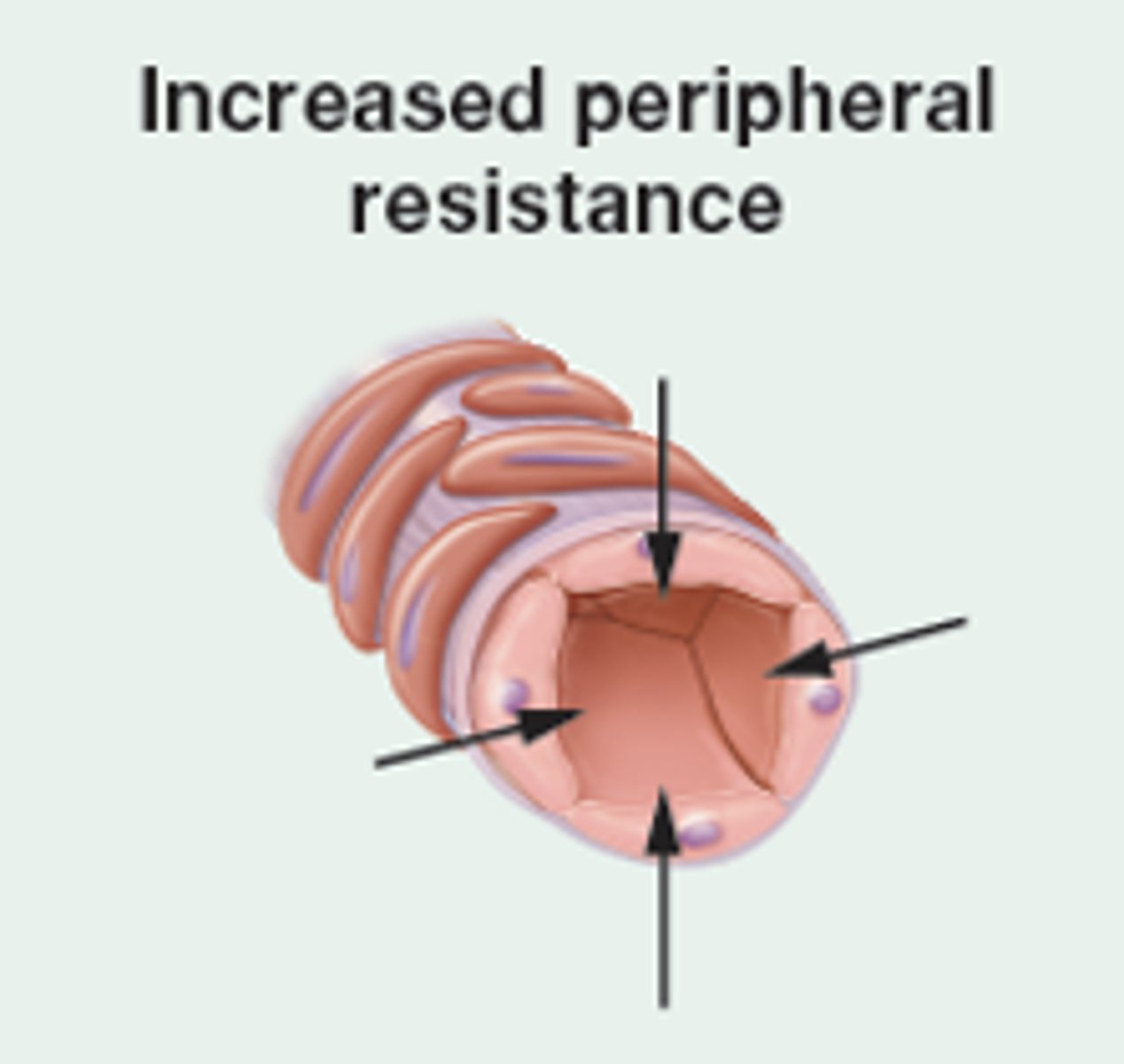
What mechanisms in endocrine and neural DECREASE peripheral resistance?
ENDO; decreased renin secretion
NEURAL; increased parasympathetic activity- causes vasodilation due to brainstem mediated decrease in sympathetic activity
What mechanisms in endocrine and neural INCREASE cardiac output?
ENDO; thyroid hormone, epinephrine, norepinephrine
NEURAL; increased sympathetic activity, decreased parasympathetic activity
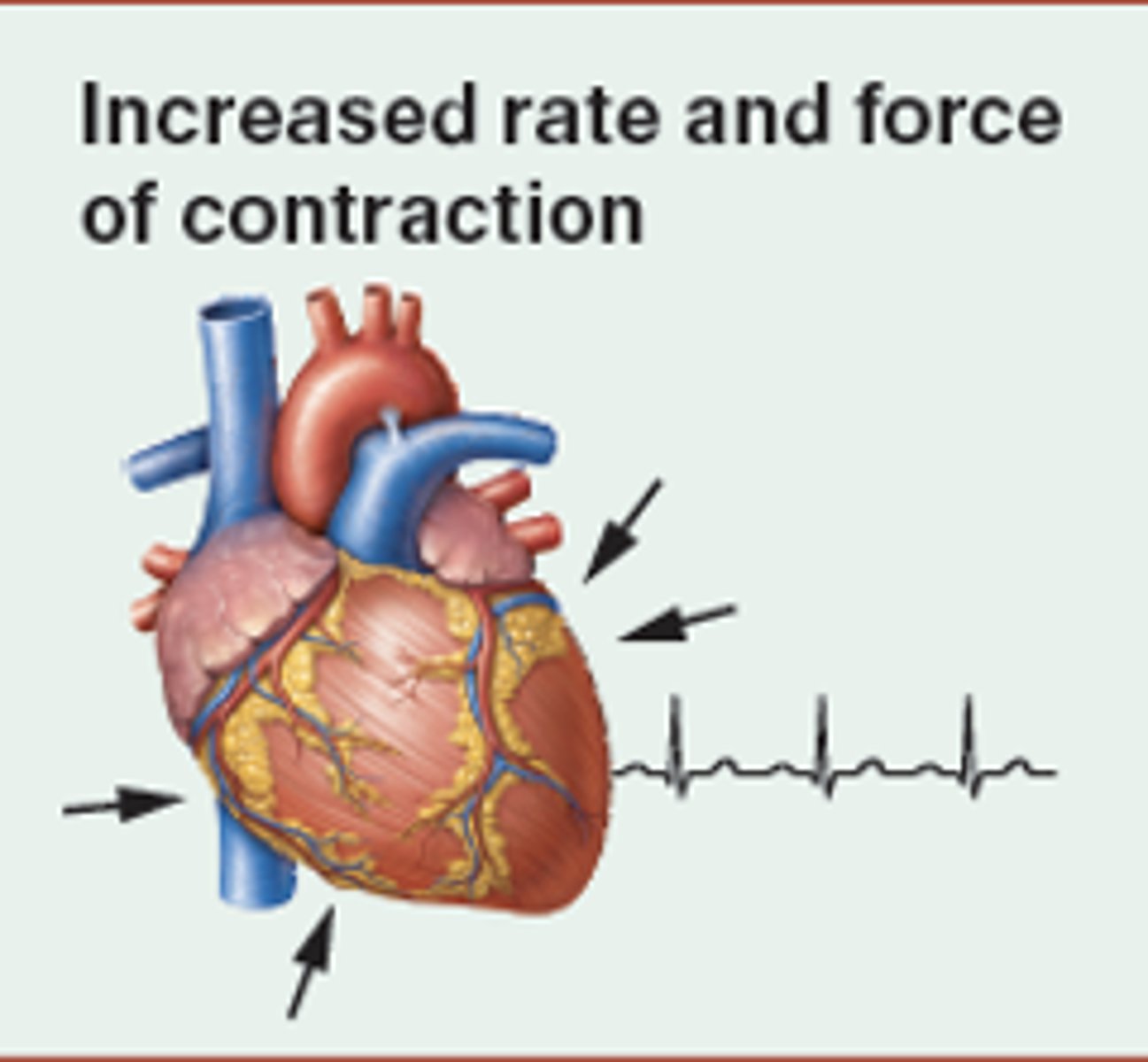
What mechanisms in endocrine and neural DECREASE cardiac output?
ENDO; atrial natriuretic peptide
NEURAL; increased parasympathetic activity, decreased sympathetic activity
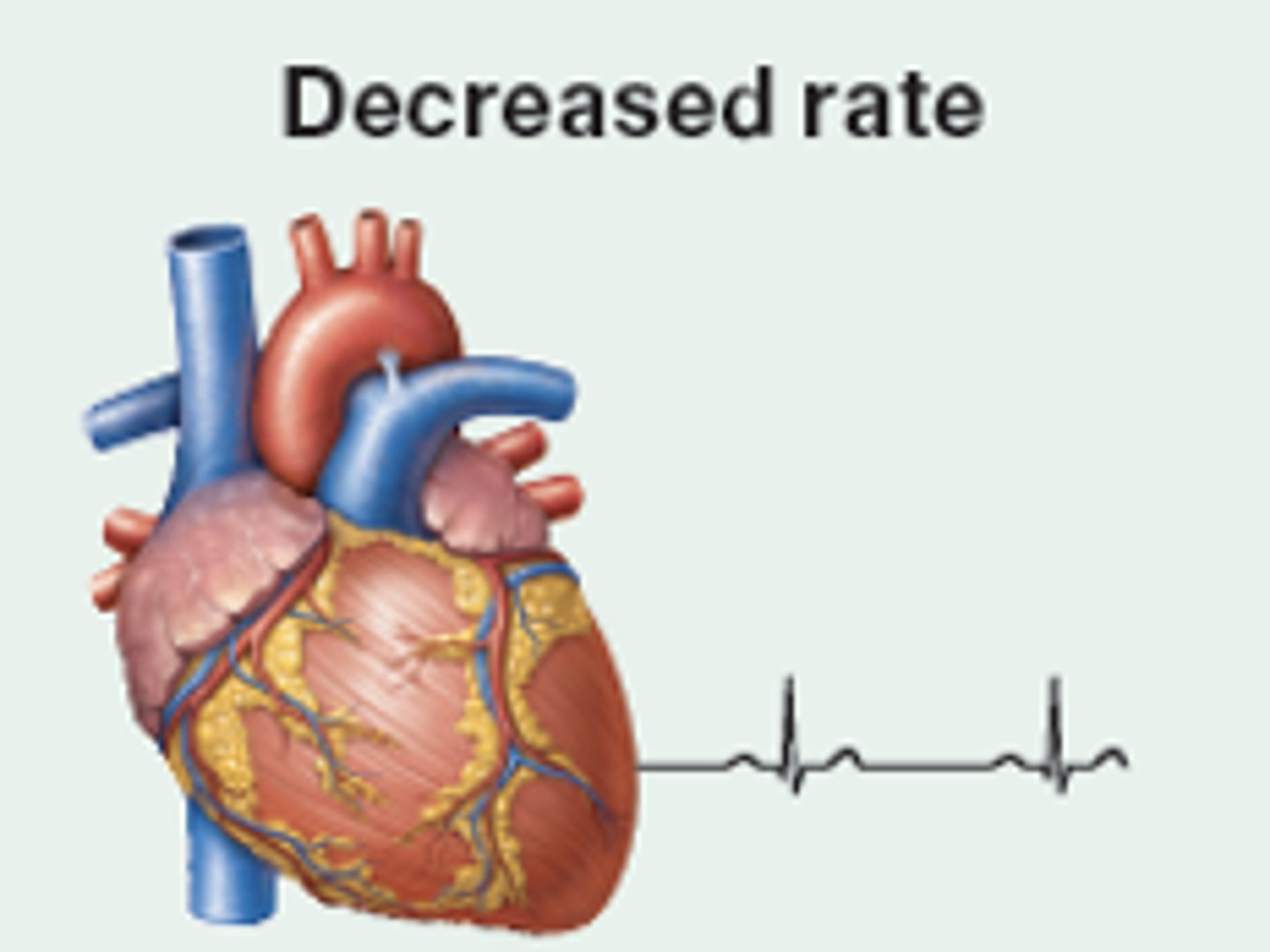
What mechanisms in endocrine and neural INCREASE blood volume?
ENDO; angiotensin-II, ADH, Aldosterone
NEURAL; increased H2O retention
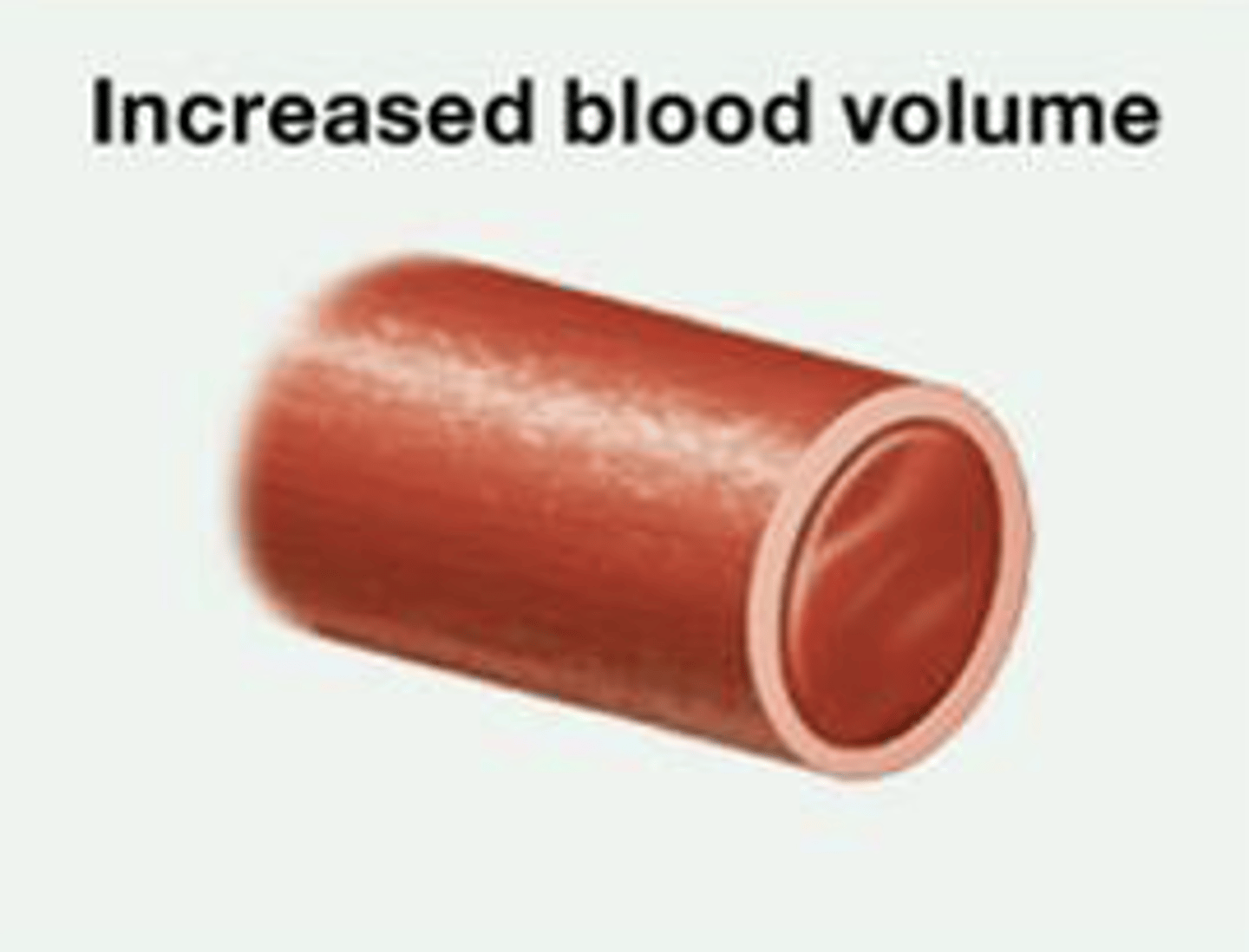
What mechanisms in endocrine and neural DECREASE blood volume?
ENDO; atrial natriuretic peptide
NEURAL; decreased H2O retention
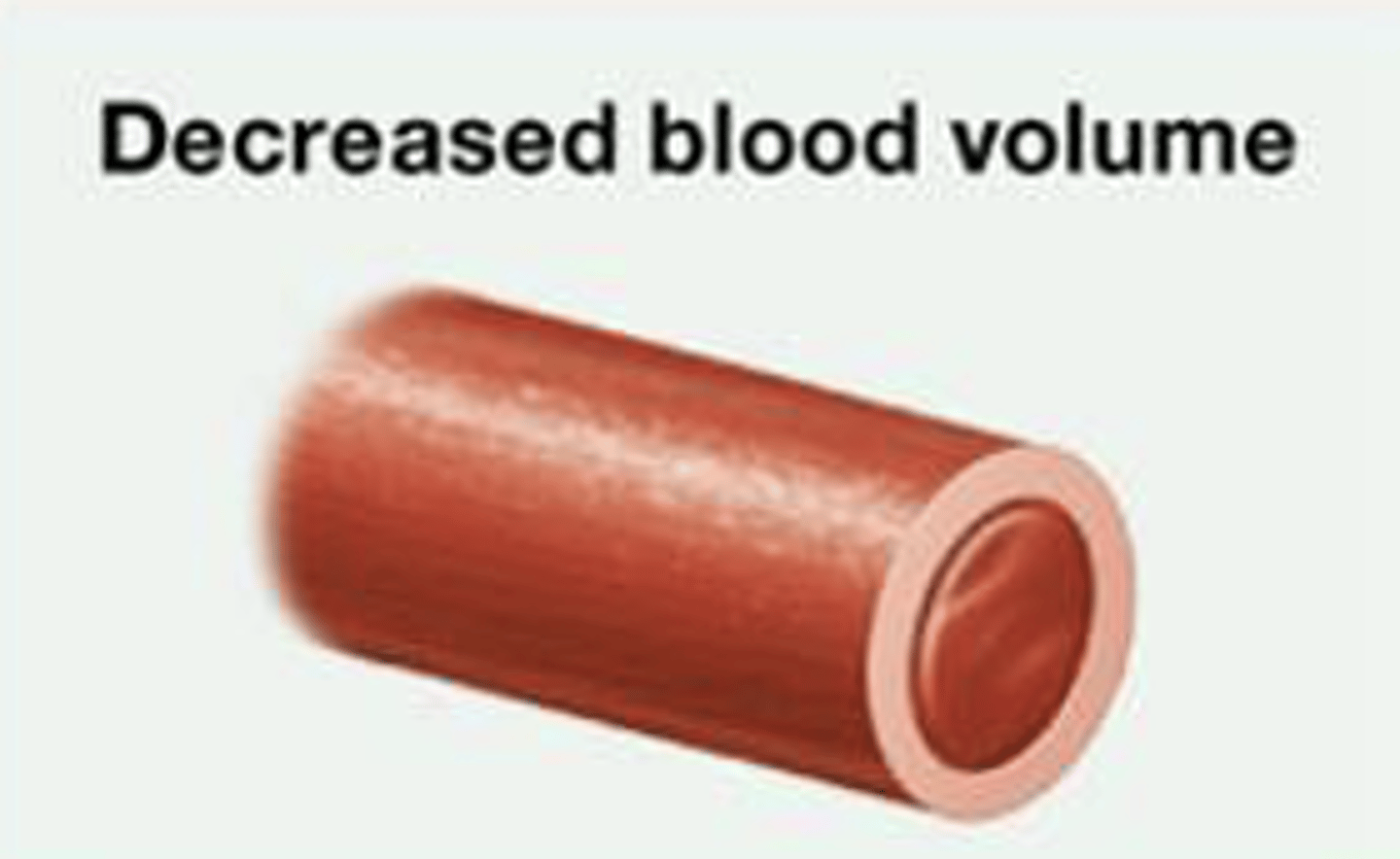
What is hypertension?
blood pressure rises too high
What are the two types of hypertension? What are it's causes?
1.) Essential (primary) hypertension—cause is unknown
2.) Secondary hypertension—cause can be determined
What is Hypotension? (specific pressure)
systolic pressure lower than 90 mm Hg and/or diastolic pressure lower than 60 mm Hg
How is hypotension diagnosed to patients?
diagnosed as such only if individual shows symptoms
What is circulatory shock?
Severe hypotension that can lead to loss of consciousness and organ failure; blood pressure is insufficient to deliver oxygen and nutrients to cells; can be rapidly fatal
What is hypovolemia?
Most common cause of hypotension, reduced blood volume
What is the cause of hypovolemia?
as result of blood loss, fluid losses from diarrhea, vomiting, overuse of diuretics, or insufficient fluid intake;
What is hypovolemic shock
severe blood loss; fatal unless blood volume is restored
How can HR affect blood pressure?
Decrease in heart rate can result in hypotension; generally due to medications prescribed to treat hypertension
What is heart failure?
inability of heart to function efficiently as pump, decrease in stroke volume
What is cardiogenic shock?
severe heart failure produce dramatic drops in cardiac output
How does vasodilation affect hypotension?
Excessive vasodilation can produce profound hypotension
What causes excessive vasodilation?
medications for hypertension, abnormalities in ANS functioning, and decrease in blood pH
What is anaphylactic shock?
severe allergic reaction; release of chemical histamine into blood, cause excessive vasodilation
What is septic shock?
Excessive vasodilation occurs with certain bacterial infections of blood